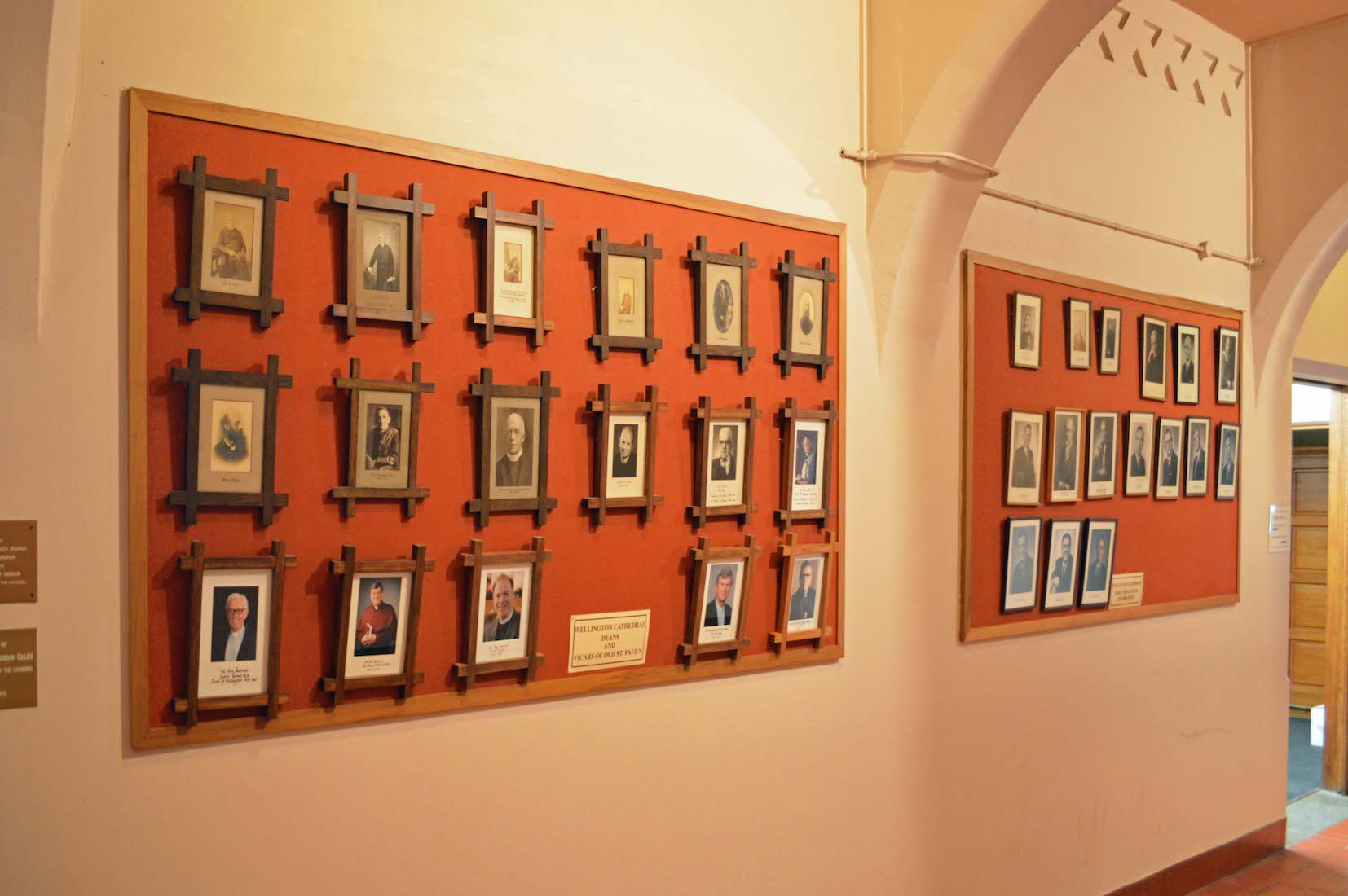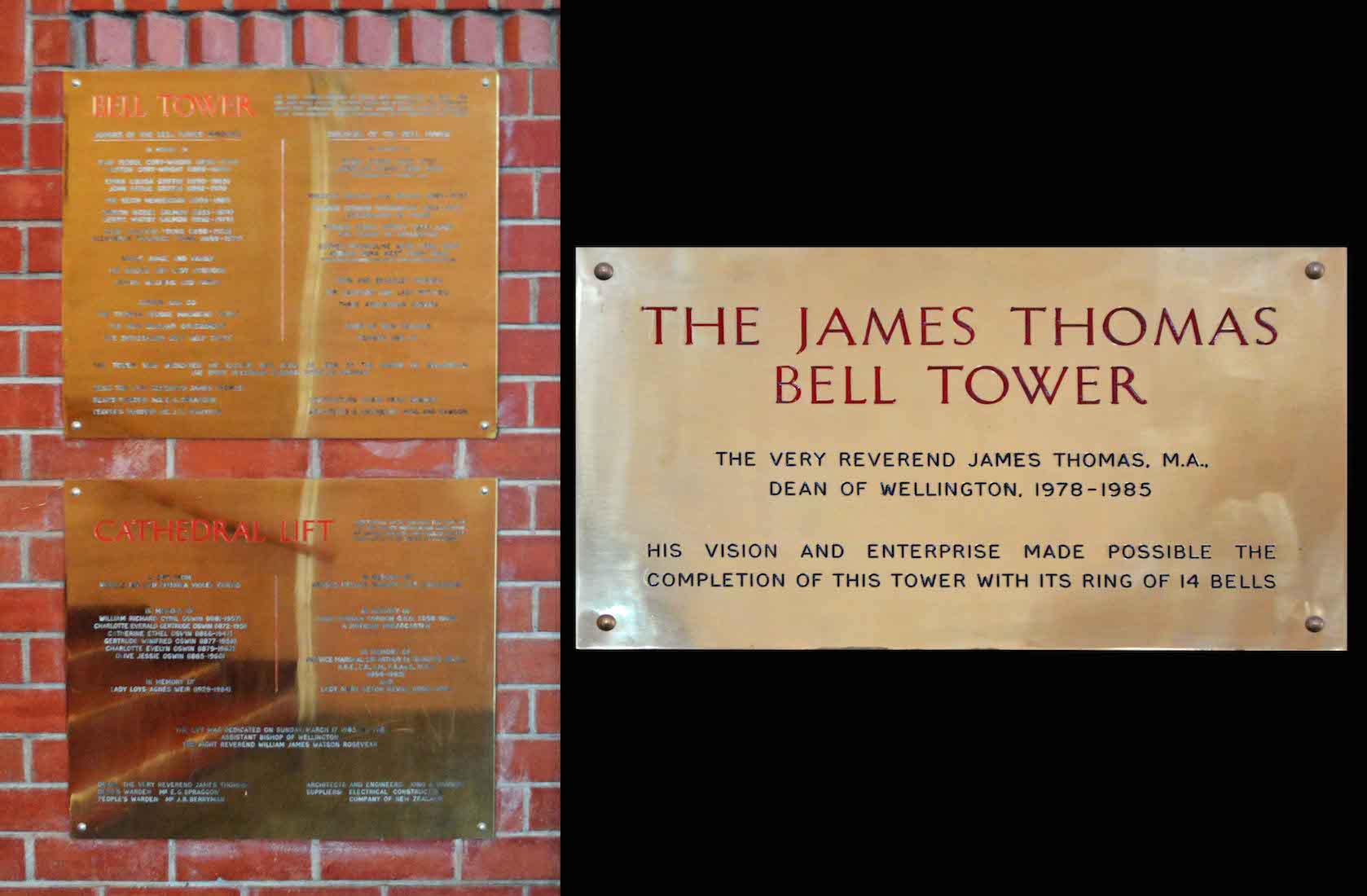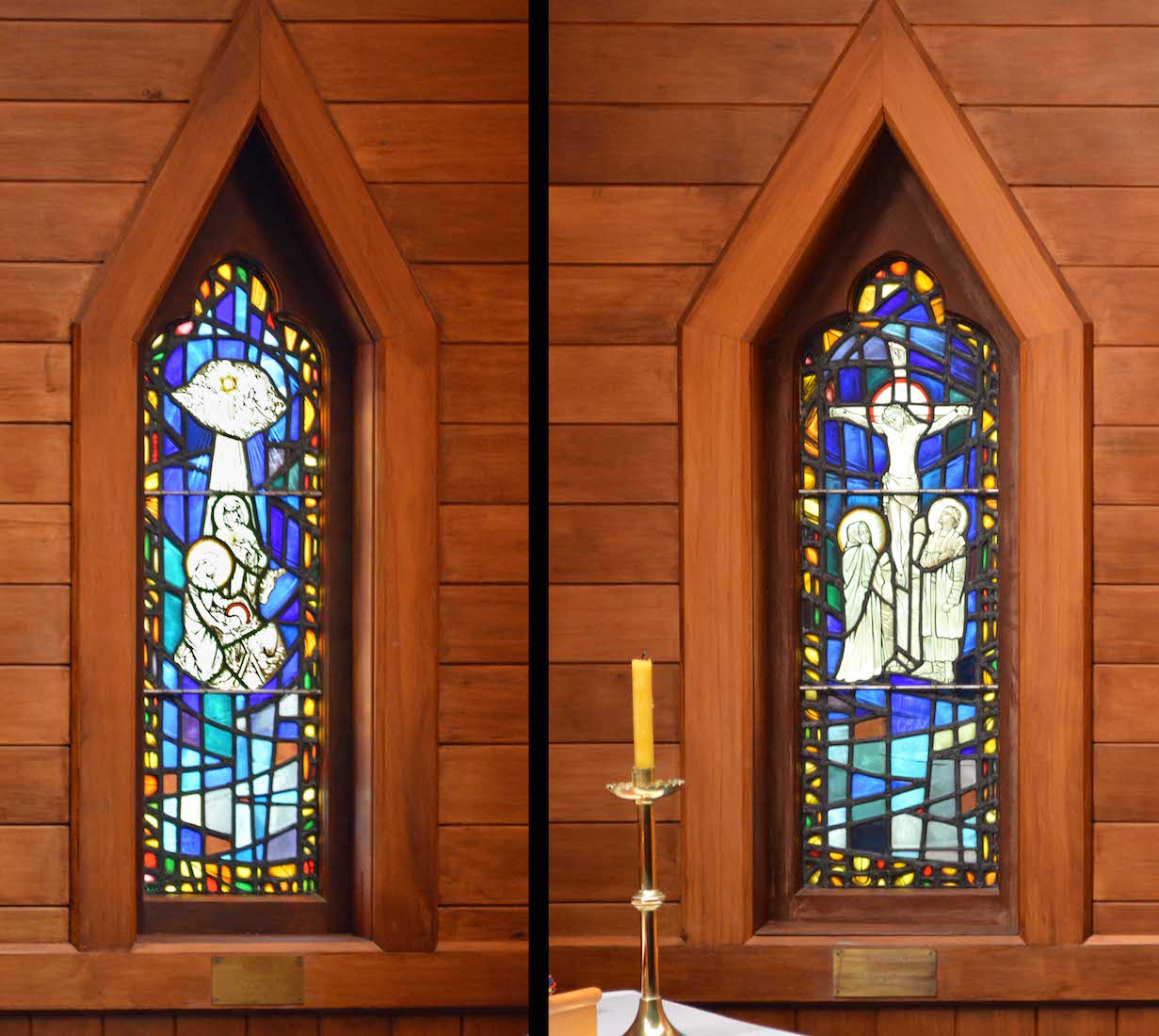
The theme here is from John 1:29: ‘Behold the Lamb of God who takes away the sin of the world’. Symbols include a crown, the world, the Chi-rho symbol (for Christ), the Lamb with flag, the shepherd’s crook, fern frond, and a little boat with text ‘oikoumene’ – Greek for the known world. PLAN
62. SOUTH AMBULATORY

Turning the corner, we now face back down the South ambulatory towards the nave.
63. SOUTH AMBULATORY WINDOWS
The themes of these windows are, from left: I am the Way; I am the Resurrection; I am the Life. The middle windows show new growth and the phoenix, believed to rise to new life from its ashes. The windows at right show a fruiting tree, and a foetus by an unfurling fern frond under a nurturing sun.
64. DISPLAY AND CERTIFICATE
The cabinet sits in an access way through to the chancel. The certificate is a ‘Special Thanks’ to Wellington Cathedral from the Most Venerable Order of the Hospital of St John, dated 1998.
65. CATHEDRAL PEOPLE
These two boards show people who have been involved in ministry and leadership at the Cathedral. The near board is headed ‘Deans and Vicars of Old St Paul’s’.
66. FIRST BISHOP
This important plaque remembers George Augustus Selwyn, First Bishop of New Zealand, born April 5th 1809, Died April 11th 1878. He was Bishop of NZ (which included Melanesia) from 1841 to 1858. His diocese was then subdivided and Selwyn was Primate of NZ from 1858 to 1868. Returning to Britain, he served as Bishop of Lichfield from 1868 to 1878.
67. BELL TOWER
The Bell Tower was a further extension of the Cathedral in 1984. It is named after James Thomas who was the Dean of the Cathedral at the time. Many others involved in this enterprise are listed on the brass plaque.
68. BELLS
This next plaque lists details of the 14 bells. Finally there is an acknowledgement that in 1910 a peal of 5,040 changes was rung in three hours and 14 minutes – a record only fully appreciated by bell ringers!
69. LADY CHAPEL PLAQUE
We return now to the Lady Chapel, entering off the North ambulatory. This plaque records a generous bequest.
71. CHAPEL NAVE WALL
The Chapel has a warm feel, given by its timber construction. This nave wall features four stained glass windows, and several plaques. The Chapel windows were designed by Beverley Shore Bennett, in shades of blue associated with the Blessed Virgin Mary.
72. CHAPEL WINDOWS
These four windows depict from left: the Annunciation by the Angel Gabriel to Mary; the Visitation when Mary visits her cousin Elizabeth; the Magnificat – Mary’s song of praise; and the Presentation of the baby Jesus in the Temple.
73. ALTAR WINDOWS
The windows closest to the altar depict the two outstanding events of Mary’s life – the birth and the death of her son Jesus.
74. FURTHER WINDOWS
The windows on the other side of the Chapel show, from left, Epiphany – the coming of the wise men; Flight to Egypt – when the Holy Family flee from Herod; Temple visit – Jesus aged 12 visiting the Temple; Miracle of Cana – the first miracle when Jesus turned the water into wine.
75. BANNERS
Two banners hang at the back of the Lady Chapel. They each depict the Virgin Mary with her son, Jesus, and they both carry the Mothers’ Union name. The banner at right for the Association of Anglican Women shows a map of the lower part of the North Island. The banner at left is the older of the two and originally hung in Old St Paul’s.
76. CHAPEL ORGAN
The Chapel organ was made in London in 1961 by J. W. Walker and Sons, and was shipped to NZ for Calvary Hospital Chapel. This building was later demolished and the organ was purchased by the Cathedral in 1993.
78. ORGAN PIPES
The Cathedral’s organ pipes tower above the chancel. The organ, by T. C. Lewis (London) was first installed at Old St Paul’s in 1877 as a two-manual tracker instrument blown by water pressure. It was rebuilt in 1980, and there are now approximately 3500 pipes.
79. ORGAN CONSOLE
The organ console is on the other side of the chancel. The master console has four manuals and 81 stops.
80. CROSS OF NAILS
This cross of nails is at the left of the chancel steps. It was made from some of the thousands of nails which fell from the roof of St Michael’s, Coventry, England, when it was bombed in 1940. The Cross was presented to the Cathedral.



















